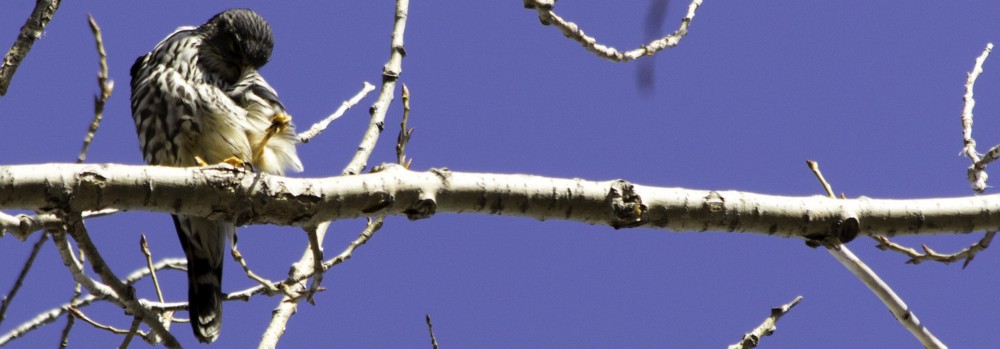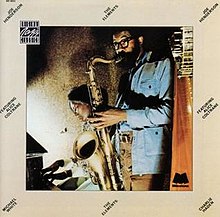Time for another link in The Jazz Chain! This is my exploration of jazz where for each entry I look at an album led by a musician who appeared as a player on the previous entry. Last time on The Jazz Chain I looked at Freddie Hubbard’s album 1970 album Red Clay. This week we move 3 years ahead in time to look at an album of saxophonist (and flutist) Joe Henderson’s. Henderson was a magnificent tenor sax player and he worked with many of the best musicians jazz had to offer throughout his career that last over 40 years. For The Jazz Chain I want to look at an album of his that is fairly different from a lot of the playing he is known for: his 1973 album, The Elements.
The Elements – Joe Henderson – 1973
This album brings us a first look at a fantastic corner of jazz that I have come to love more and more: Spiritual Jazz.
In my experience you won’t always find Spiritual Jazz albums described as such. Often they are called Avante Garde or Experimental Jazz but that, I think, is really it’s own category, though there is a lot of overlap. It seems like a lot of Spiritual Jazz gets labeled as “just” Avante Garde and I have to wonder if that isn’t sometimes a deliberate attempt to ignore the spiritual-ness of the music and the musicians. Sometimes you’ll also see these things called Cosmic or Astral Jazz and, for my money I prefer those over Avante Garde.
The absolutely legendary John Coltrane is probably fair to peg as the originator of Spiritual Jazz1Though Sun Ra was out there doing his thing. and several musicians associated with him were big in pushing that forward after his death. One of the biggest in exploring Spiritual Jazz2And was so obviously spiritual about it the label couldn’t be denied. was Coltrane’s wife Alice Coltrane.3She was also known as Turiyasangitananda or Turiya Alice Coltrane and became a swami later in life. She joins Henderson on this album playing piano, harp, tanpura, and harmonium. This album seems to be often credited as a joint venture between Coltrane and Henderson (she almost never played the sideman role after her husbands death, almost always leading her own albums). Henderson wrote the music and was band leader but it’s a fact that Henderson is very much exploring Coltrane’s world and musical influences here.
Joining Henderson and Coltrane are the great Charlie Haden on bass4Himself a definite big piece of Avante Garde and free jazz but also very much a Spiritual Jazz explorer and violinist Michael White. Percussionists Kenneth Nash5Who also gives narrating vocals to track 4, Earth, Baba Duru Oshun, and Leon “Ndugu” Chancler round out the musicians.
The album, basically a concept album, comprises four tracks: Fire, Air, Water and Earth and the music is, frankly, wonderful. From the funky first rhythms of Haden’s bass on Fire that open the album to the equally upbeat (but not particularly uptempo) ending of Henderson and White accompanied by the droning of Coltrane’s tanpura on the final track, the album is a trip to get lost in.
One thing that sets this album apart from much of what I’ve looked at for The Jazz Chain is that it isn’t intricate innovative solos that take the show, indeed there really aren’t any of those, but the soundscape created by the the players as a whole. You can still enjoy the individual contributions, I particularly love Henderson’s tone and playing across the album and White’s violin brings something special I think, but this is definitely a music that is about the ensemble. At most moments there is a lot going on and even when one musician has center stage, such as Coltrane’s harp playing on Fire, they are supported by a lot going on in the overall sound, often in the percussion and bass playing.
Another thing that makes this album interesting for me, in comparison to what we’ve looked at so far, is that it is part of the era when some jazz musicians started getting interested in what could be done on the production side of things and with electronic effects. If you think only of jazz as something from the 50s and 60s that didn’t explore such things this album6And many others out there. could be real eye openers. Just for example, when you’re listening to this remember that there is only one horn player and one violinist. Thanks to manipulation that is often something easy to forget. I’d go so far to say that if you’re a fan of certain kinds of electronic music, such as Pysbient, you might find an extra appeal in some of this album that sounds, at times, like there are roots of that modern music here.
In the end I find myself really pleased to have picked this album for The Jazz Chain because it just makes me happy. I love losing myself in the music and enjoying the journey and it’s the kind of album where the more I listen the more I discover there is to hear.
Our next album on The Jazz chain is going to continue this journey as we’re going to check out an Alice Coltrane offering. As I mentioned, she doesn’t have very many “sideman” appearances so I’m not missing this opportunity to feature one of her albums in this series – because the opportunity might not come again!
I hope you’ve enjoyed this installment of The Jazz Chain, and I hope you give The Elements a listen. If you’d like to see a list of all the posts for The Jazz Chain you can find them at this page.
If you’d like to listen to check out a playlist of all the albums featured on The Jazz Chain7That are available on Spotify. you can check them out at this playlist here.
Until next time then!

